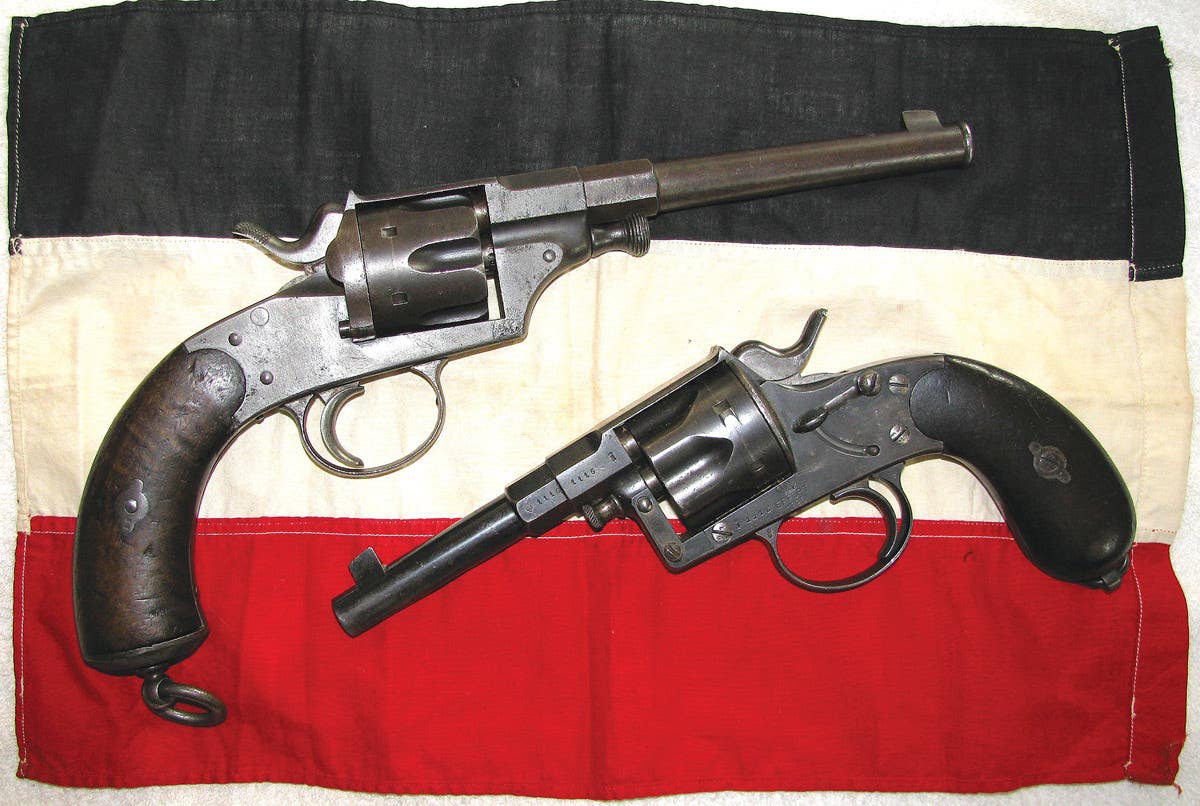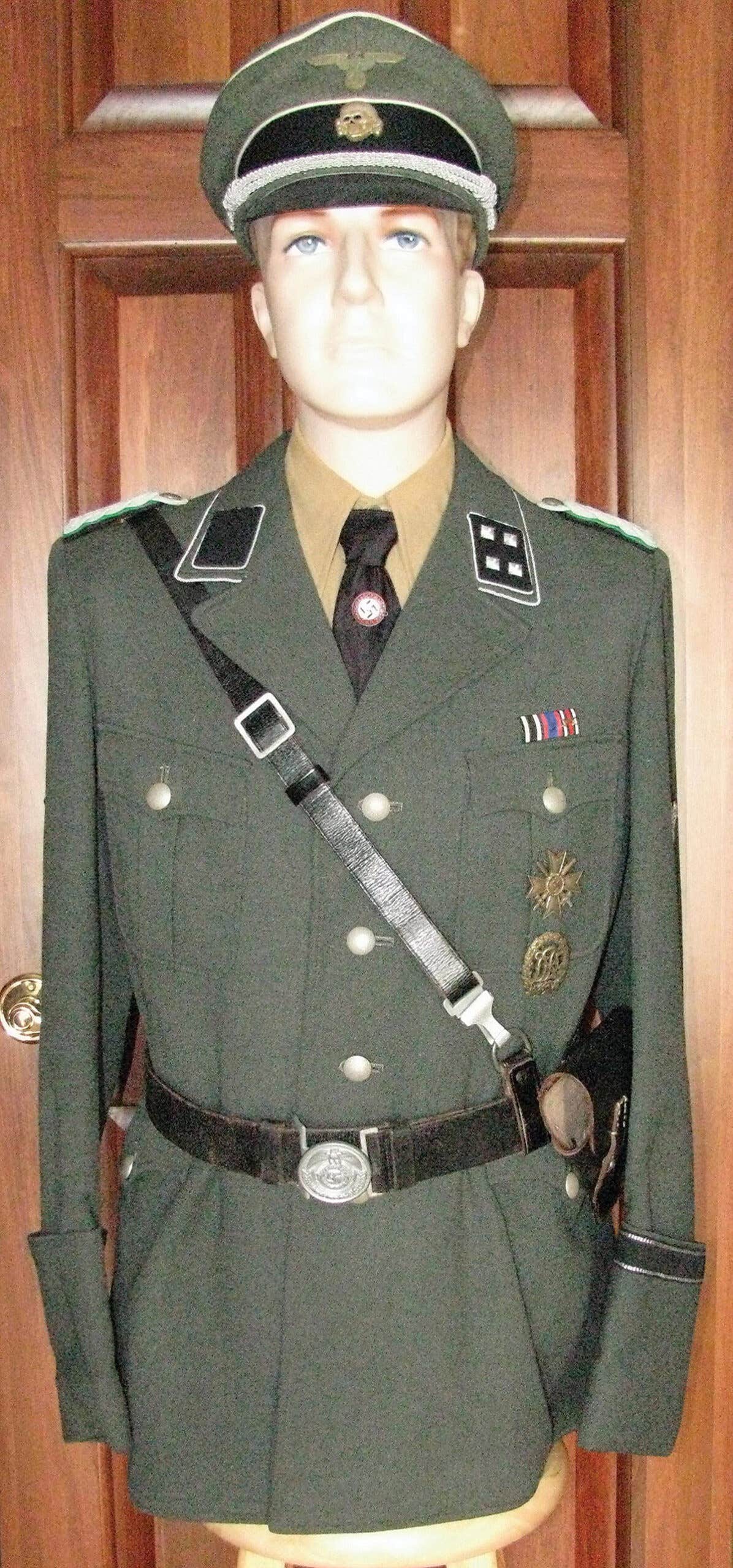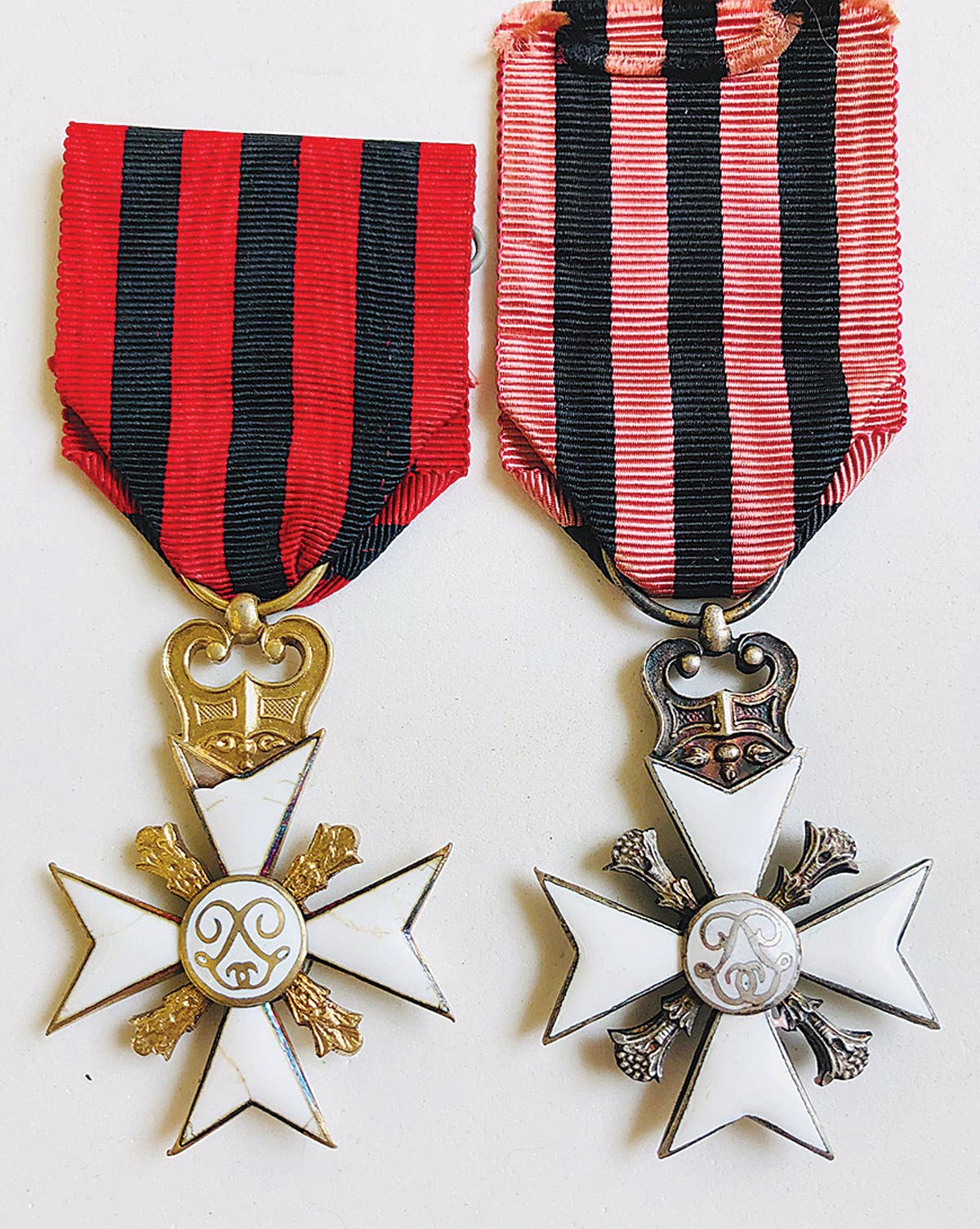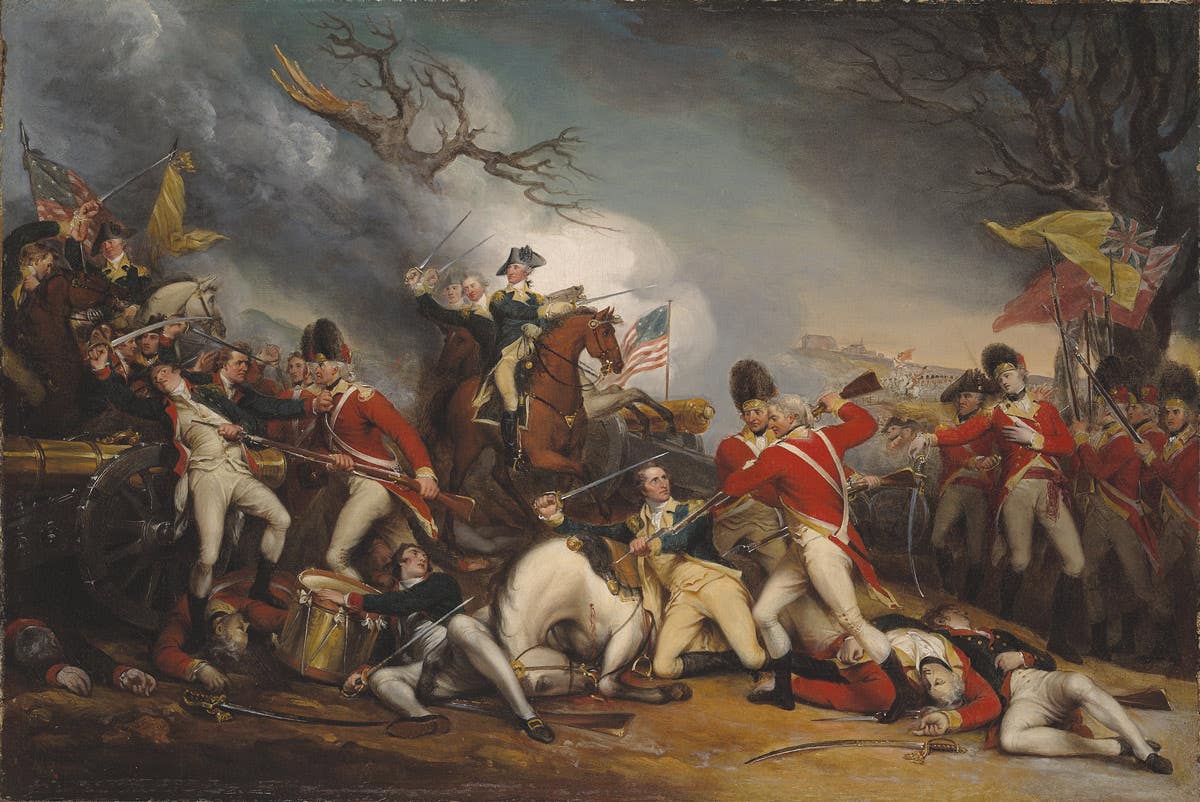Collecting Vintage Military Toys
Vintage war toys command high prices and devoted collectors. Dealer and collector Andrew H. Lipps shares his insights in this Military Trader “10 Question” interview
In an effort to report on the state of different facets of the military collectibles market, Military Trader strives to discover and share the opinions of the hobby’s leading dealers and collectors. This month, we had the privilege to talk with Andrew H. Lipps. Most will recognize his name as one of the leading dealers in WWI, WWII, Korean, and Vietnam militaria under the banner of “Wartime Collectables Military Antiques.” Some may not know, however, he is also a prolific author and collector, specializing in wings, insignia, and vintage toys.
Andrew has been a collector of militaria since the 1970s and a militaria dealer since 1983. Though he enjoys collecting and dealing in militaria, in 2006, he chose to answer the call to teach. He has been a full-time Special Education teacher specializing in working with students with Autism since then.
Though Andrew offers a wide range of military relics, he is well-known for his expertise about vintage military toys. With more than 25 years’ experience in buying, selling, trading and collecting, he has a very good sense of the ebbs and flows of the hobby. We are pleased to offer his response to our “10 Questions on collecting vintage military toys.”
Military Trader: Thanks so much for taking the time to meet with us. I realize that you have your hand in all facets of militaria, but looking at your web site, it looks like your own collecting path has led to vintage military toys. Tell us how you came to develop this interest.
Andrew Lipps: I became interested in toys and the connection to military history several years ago when a gentleman came into my shop with a vintage biscuit tin under his arm and the announcement “This might interest you.” The contents had remained untouched since 1946, when his grandmother had brought it to the United States in her immigrant’s belongings.
We opened the tin and unwrapped the yellowed newspaper to find the possessions of a child in Hitler’s Germany. A copy of Mein Kampf, a German Youth armband, and several toy soldiers to include an intriguing toy figure of Hitler, complete with the arm that would move in the Nazi Party salute.
Military Trader: “Dime store soldiers,” Britains, “flats,” “composition…” most military collectors, I suspect, are “uninitiated” when it comes to vintage toy soldiers. Can you explain some of the basics of how to recognize a toy soldier that might have that vintage appeal as opposed to just a toy box filler from the 1960s?
Andrew Lipps: The earliest toy soldiers date to the Pharaoh’s tombs, but the heyday of toy soldiers truly began in late 1800s Germany. Zinnflatten, or “flat tin,” soldiers and an array of ships and accessories became popular around the time of the Franco-Prussian War. Though intriguing, these remain low-priced. Boxed sets can still be found relatively cheap and make a great display.
An Englishman named William Britain revolutionized the toy soldier industry in the 1890s with the development of hollow-casting to produce very accurate figures in lead that used less metal by weight. Therefore, it cost less to ship, thereby cutting prices while increasing quality. Wm. Britains Company became the leading producer of toy soldiers and made 1/32 scale figures that strove for accuracy in uniform and headgear details. They expanded to recreate vehicles, cannon, Colonial armies, regiments from conflict nations as well as circus and railroad sets. Original pre-war boxed sets of these hollow-cast Britains are probably the most highly sought after. Other companies such as Johillco in England and Heyde in Germany created equally fine armies and are highly collectable but Britains remains the “King of the hill.”
Germany was busy creating its own novel toy soldiers about the same time. Composition figures, made essentially of a sawdust and glue mixture molded around a wire frame, came about prior to WWI. Scale and detail varied by company.
By the 1930s, the firms of Lineol and Hausser Elastolin were the leading toy soldier companies. The German figures have a realism not seen in the toys of any other nation. Mess sets depict soldiers shaving and washing and battlefield sets depict soldiers as they are being shot or lying dead. I know of no such English, French, or American toys that portrayed realistic scenes like these.
Hitler’s rearming of Germany during the 1930s was reflected in a great expansion of these figures. Nazi Party leaders and Stormtroopers marched across the pages of period catalogues with Panzer Truppe and the Luftwaffe. Because these toys are fragile to environment and are hand-painted, the condition and originality is very important to collectors.
American toy companies were, for the most part, late bloomers and didn’t really start producing large numbers until the dawn of the so called “dimestore” toy soldiers of the 1920s and 1930s. Larger in size, less detailed, but more “fun” than their European counterparts, these lead figures were readily available in the 5&10 cent stores that dotted the American cities. They remain collectible with few being out of reach of the average collector. Again, condition being the biggest factor to watch for.
The 1950s saw a decline in the toy soldier industry, worldwide. The discovery of the toxicity of lead coupled with the ability to create detailed toys from plastic is generally seen as the culprit, but one must also realize that, after two World Wars, the world had was without major wars and interest in all things military was on the decline. Plastic play sets and GI Joe are collectible. However, nothing rivals the feeling of holding in your hand a boxed set of Britains Boers dated from the time when England was embroiled in that conflict or a ‘toy’ figure of NSDAP leaders Hess or Goebbels and knowing what their human counterparts represented.
Military Trader. Now to the business side of toy soldier collecting. It seems that vintage military toy collecting has subsided during the last decade. How would you characterize this aspect of the militaria hobby? Can you characterize a “typical” vintage military toy collector?
Andrew Lipps: I have been hearing about the “aging of the hobby” in militaria now for 40 years, and yet, it’s alive and kicking. The same is true with toys.
There is a reality, though, that the economy is down and therefore, prices and values are as well. Furthermore, the toy soldier field had gone through some major changes. Though the plastic toys of my youth will never really be strongly valued collectibles, modern-made toy soldiers from companies like King & Country, Figarti, modern Wm. Britains, and Thomas Gunn are very popular.
I don’t believe there is a “typical collector.” The majority are probably males in their 30s to 60s, but there are many youthful collectors as well as females in the hobby. Some collect only boxed sets for display, other’s collect individual figures for dioramas and displays.
Military Trader: What areas of vintage military toy collecting do you consider to be especially “hot” right now?
Andrew Lipps: I am not a collector of modern toys, but the boxed sets by King and Country and other high quality manufactures continue to be popular. In regard to the vintage toy soldiers, though the more common of the older Wm. Britains sets have waxed and waned in value, the truly rare sets continue to set auction records.
Interestingly, the German composition figures seem to have changed a bit from the high interest in Third Reich-related figures (Party leaders, NSDAP, SS, SA, etc.) to the battlefield pieces and soldiers of the Wehrmacht.
Military Trader. And what do you consider to be slow-starters or low interest items in vintage military toy collecting right now? Has this always been the case or is this part of a flow within the hobby?
Andrew Lipps: I have seen a marked decline in the value of the tinplate vehicles and battlefield accessories produced in pre-WWII and wartime Germany. A Tippco or Hausser tin wind- up half-track with its composition crew was an easy sale in the +/-$1,000 range a few years ago. I am seeing these bring +/-$500 now. Recent auctions have seen a similar drop in values for other tinplate military vehicles. The bunkers and fortifications made in the 1930’s by Hausser and Gottschalk were $100-$200 and sold quickly a few years back but are half that now. I see this as a sign of the economy and fully expect prices to return after election year.
Military Trader: Tell us about the level of international interesting in collecting vintage military toys.
Andrew Lipps: Toys have always been— and continue to be— collectible, worldwide. There does seem to be some variety of interest among nations with most leaning towards toys produced in their own countries.
Americans are the primary collectors of the dimestore soldiers of Barclay and Manoil and the tinplate vehicles by Marx. Few of these go overseas. In England, the market is stronger for the high-end soldiers such as boxed sets of Wm. Britains or the famed Knights made by Courtenay. I see a lot of tin friction 1950s military and space toys going to Japan. There are, of course, exceptions to all!
Military Trader: It probably goes without saying, anyone who collects militaria can’t resist pausing to look and marvel when they encounter a good display of vintage military toys. What tips do you have for someone considering taking the plunge to assemble a small collection?
Andrew Lipps: I would offer the same advice as with militaria. Collect what you like, and like what you collect. I am a novice historian when it comes to studying England’s Colonial wars, but I am drawn to the toy soldiers depicting Zulu warriors, Egyptian Cavalry, Boer Infantry, and the like.
The toys make a great addition to militaria displays as well. My Indian Wars medals are displayed with German composition figures of Wild West cowboys and Indians.
Yes, it is an investment, and it seems to be anathema to collectors when we use words like “investment” or “profit,” but the some of these purchases can be pricey for the average wallet. Keep that in mind when buying, but enjoy the hobby, first and foremost.
Military Trader: Two-part maintenance question: How do you recommend a collector store / display their collection. And, what are your “go-to” references (print, online, other) that you would recommend to a person wanting to collect vintage military toys?
Andrew Lipps: Though there were “display” toys like the aforementioned Courtenay knights, the majority of these pieces are toys and meant to withstand to some degree the rough and tumble child’s world. But they are also made of materials such as composition and tin that are susceptible to damage if exposed to too much heat, cold, or moisture. Climate control is not necessary but great temperature variations or sealed storage where moister or mold can build up is dangerous.
There are some “must-have” collector references. The standard reference for German composition toy soldiers is Reggie Polaine’s two volume set, The War Toys: Kriegspielzeug. Volume I covers Elastolin, and Volume II covers Lineol. Collectors of Wm. Britains toys rely on The Great Book of Britains. It is tough to find and pricey, however. James Opie has authored several books that are easier to find and well worth getting. James O’Brian’s books on collecting toy soldiers are excellent general references.
Military Trader: Our readers love stories about collectors’ “Favorite Finds.” Tell us about what you consider one of your favorite vintage military toy finds during the past 30 years.
Andrew Lipps: My favorite find is still a mystery. About 6 years ago, I purchased a large militaria collection from the estate of a deceased collector. It focused primarily on weapons and wasn’t a toy collection. But, in one box, I discovered a very accurate model of a WWII German 88mm cannon. It is highly detailed and appears to be of the period. The cannon swivels, raises, and lowers, and it has a working breech. I don’t know if it’s a salesman’s model, a toy, or a factory piece, but it certainly looks great with my tinplate German toys!
Military Trader: Finally, do you think that vintage military toys is a timeless area of collecting or is it tied directly to generational nostalgia? How will this impact collecting these toys over the next ten years?
Andrew Lipps: There have been “toy collectors” as long as there have been toys, and that will never change. The interest in the unique, rare, or classic toy is truly timeless.
The creation of new toys is most definitely a sign of the current times. One sees that in the boom in toy boats at the turn of the century when the dreadnaughts and ironclad warships arrived. It reappears in the 1930s when military vehicle toys were prolific with the advent of mechanized armies. A very direct link to truly “new” toys is seen in the myriad “atomic” toys in the 1950s and outer space toys that came out of the 1960’s “Space Race.”
I can’t predict what will be the next wave in toy manufacturing, but I think I can be unchallenged in saying that collecting toys is a hobby that is here to stay! J
We are honored to interview and report on prominent players in our hobby. To learn more about Andrew and Gale Lipps’ business, Wartime Collectables Military Antiques , or more importantly, to view his current offerings, log onto www.wartimecollectables.com. Andrew may be reached in South Carolina by email at wartime@wartimecollectables.com or by phone at 803-463-6935
You may also like:
As an Amazon Associate, Military Trader / Military Vehicles earns from qualifying purchases.
John Adams-Graf ("JAG" to most) is the editor of Military Trader and Military Vehicles Magazine. He has been a military collector for his entire life. The son of a WWII veteran, his writings carry many lessons from the Greatest Generation. JAG has authored several books, including multiple editions of Warman's WWII Collectibles, Civil War Collectibles, and the Standard Catalog of Civil War Firearms. He is a passionate shooter, wood-splitter, kayaker, and WWI AEF Tank Corps collector.







